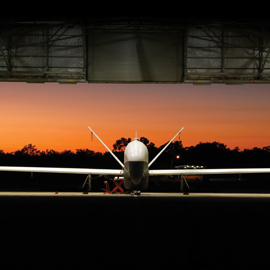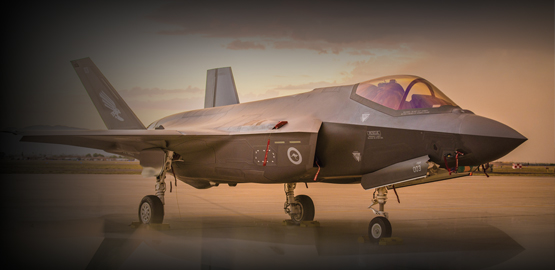Statement by Bryan Clark, Senior Fellow, Center for Strategic and Budgetary Assessments
For almost three decades, CSBA has been a reliable source of independent, path-breaking research focused on the future of defense.


The heart of CSBA is our staff of uniquely qualified defense experts who conduct in-depth strategic and budgetary analyses.
- Home
- Research
- Publications
- Testimonies
- Statement Before the House Armed Services Committee on Future Fleet Architecture Studies
Related News
US Navy Wants Larger, Better Fleet, Says Cost Not Determined
At the Center for Strategic and Budgetary Assessments, senior fellow Bryan Clark said Congress has recently shown a willingness to add Navy ships to the budget and he thinks they'll continue to do so to get to a larger fleet. Congress can't necessarily commit to a future vision because the budget is done year to year, not decades out, he added. Clark, who worked for the previous chief of naval operations, said the most innovative part of the paper is the proposed interconnectivity of the future fleet, so ships over hundreds of miles can work together to achieve a mission and a single ship doesn't have to be capable of doing every mission on its own. It's a different way of thinking about a Navy, he said.
Trump Wants to Grow the Navy, but He Doesn’t Have His Own Navy Secretary to Sell It
Sean Stackley, the current acting secretary, is widely respected in and around the Pentagon, but his non-permanent status will make him hesitant to make any big decisions that could hem in a permanent Trump selection, said Bryan Clark, a retired submarine officer and analyst with the Center for Strategic and Budgetary Assessments. As the Navy looks to grow it's going to need to make trade-offs about what the service is not going to buy anymore, and once a program is canceled or significantly altered, those decisions can be tough, if not impossible to reverse. "A holdover is just not going to be comfortable making big decisions on behalf of the new administration," Clark said. That's going to quickly be important, since the Navy is getting ready to roll out its 2018 budget and is already well into compiling its 2019 budget, Clark said.
Will Hybrid Warfare Protect America’s Interests in the South China Sea?
The Center for Strategic and Budgetary Assessments (CSBA), in a recent report, argued for the expansion of the unmanned fleet, with 40 additional, larger, ocean capable unmanned ships – a goal that received praise and strong backing by Senator John McCain. The United States already has the perfect testing ground for exploring its current and future unmanned system and to further explore the various tactical and strategic frameworks in which they would prove most valuable.
Missing From Trump’s Grand Navy Plan: Skilled Workers to Build the Fleet
Because companies won't hire excess workers in advance, they will have a huge challenge in expanding their workforces rapidly if a shipbuilding boom materializes, said Bryan Clark, who led strategic planning for the Navy as special assistant to the chief of Naval Operations until 2013.
House Hearing Sets Up Debate on Current Navy Platforms in Future Fight
Bryan Clark, a senior fellow at CSBA, said during the hearing that the Navy ought to move to a larger and more survivable frigate design, ideally building the LCS and LCS-based frigate for a few more years until a new design is ready for production. Clark said CSBA’s studies highlighted the need “to do air defense for another ship so it can do an escort mission, which we saw in our analysis as being increasingly important for a situation in which our logistics force and civilian convoys and noncombatant ships are going to be at risk of being attacked by an enemy that’s willing to go all out and attack civilians as well as attacking just strictly military ships. So we saw that need to have the ability to do air defense of another ship as being essential. The other thing it has to be able to do is anti-submarine warfare, and in particular using new anti-submarine warfare concepts that leverage things such as the variable depth sonar, which the LCS mission package has, and the multi-function towed array, which the LCS mission package has as well. What those capabilities do is allow us to transition from having a strictly man-on-man or single-ship-on-submarine kind of ASW to now a multi-static ASW where multiple ships can look for multiple submarines, and then you need standoff weapons to be able to engage those submarines rapidly.”
Navy Looking to Ramp Up Industrial Base for 355-Ship Fleet
Bryan Clark, senior fellow at the Center for Strategic and Budgetary Assessments, said at the hearing held by House Armed Services subcommittee on seapower and projection forces, that there would have to be some investments in shipyards to enable them to further increase production, particularly in Connecticut. “They’re largely going to be maxed out in terms of their near-term industrial capacity with the Columbia class [submarines] and if we try to do two attack submarines,” he said at the March 8 hearing. “But they have workforce limitations that are going to keep them from growing further. There are some facilities constraints that just over time that have grown and need to be addressed. So putting some money into facilities and a training infrastructures of the shipyards are going to be able to bring on the workforce they need to grow in order to start doing the construction at the rate that we would need to get to a 350-ship or so Navy,” he added.

























